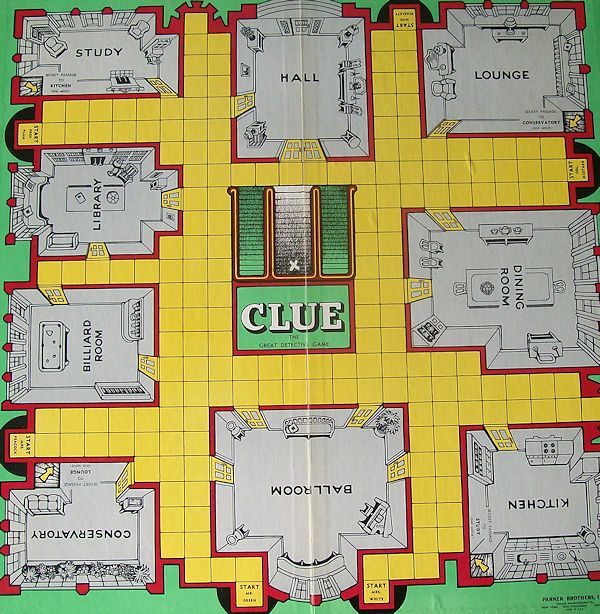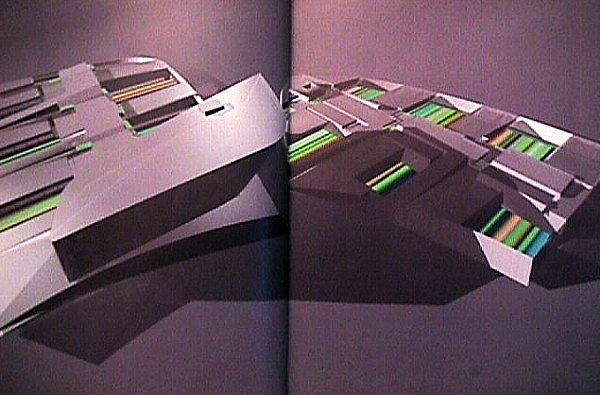"Waiting Room: Anxious, Reading, Liszt" could have something to do with copyright-free texts and altered texts and lots, lots of them--the wordiest chapter of the book that doesn't really have to mean anything. (At this point I got Encyclopedia Britannica to read about Liszt.)
Another possibility for "Waiting Room" is to tackle the Working Title Museum.
2007.07.06 18:18
What was your path to Architecture like?
Saw my first floor plan circa 1960...

...and it's been a detective game ever since. There's even been a real murder mystery or two.
| |
2007.07.31 20:28
Necessary architecture books
Reading and writing go hand in hand, and that's what's very creative about writing within cyberspace, the integralness of reading and writing.
There's so much to read now and there are so many ways to write/publish now, and I've become very fond of the places where you can actually do both.
As to books, I had and still have many, and at this point I'm seriously thinking of taking a lot of them apart and then mixing and rearranging all the various pages into a series of new books. Maybe I'm foolish, but I anyhow imagine there's a great untapped realm beyond the status quo.
2008.07.21 09:02
bored with modern & contemporary, yet?
"What Stein discovered was a writing style that celebrated its grammatical mistakes. In her most radical prose, she managed to make us conscious of all the linguistic work that is normally done unconsciously. We notice the way verbs instantly get conjugated (even irregular verbs), the way nouns naturally become plural, and the way we amend articles to fit their subjects. Stein always said that the only way to read her writing was to proofread it, to pay acute attention to all the rules she violates. Her errors trace the syntactical structures we can't see, as our "inside becomes outside."* Stein showed us what we put into language by leaving it out."
* This isn't as strange a method as it might seem. Ludwig Wittgenstein hit upon a similar method for his philosophy, which, like Stein's writing, was interested in the uses of language to the exclusion of almost everything else. Wittgenstein once said that he worked by "mak[ing] a tracing of the physiognomy of every [philosophical] error." Only by mapping out mistakes could he see how best to proceed. Samuel Beckett also subscribed to Stein's literary approach. "Let us hope that a time will come," Beckett wrote, "when language is most efficiently used where it is being misused. To bore one hole after another in it, until what lurks behind it--be it something or nothing--begins to seep through; I cannot imagine a higher goal for a writer today."
Jonah Lehrer, Proust was a Neuroscientist (2007), p. 164.
Here we have 'modernist' thinking.
Alberti's thinking appears more Platonic.
Michelangelo's thinking appears more Aristotelian.
2008.12.03 00:44
where is the good new architecture?
Is there really all that much difference between 31 December 1999 and 1 January 2000? They're arbitrary place setters, and not the demarcation of disticnt different times. Metaphorically, the calendar is the cart, not the horse.
Personally, I see the Seattle Library design going back to Kahn's [and Tyng's] mid-1950s Municipal Building designs for Philadelphia. Historical analysis within a space-time continuum is more ongoing productivity and less end-product.
| |
2008.12.03 01:50
where is the good new architecture?
I prefer to watch architecture history as it actually unfolds, and not through the aperture of somewhat artificial markers
2219
2008.12.24 10:29
pragmatists turning political?
"Instead of a revolutionary architecture, an architecture of explicitation would imply more complex political directionalities as it transforms the space and the material organization of the built environment, even if those transformations cannot be inscribed in a holistic political program. For architecture to express the domestication of density and high-rise life through specific massing strategies in tall buildings, to convey that tendencies in the articulation of the building envelope capture the new political affects, to communicate that certain manipulations of the ground and the roof indicate the politicization of nature, or to explain the breakdown of the correlation between interior and exterior and private and public, are legitimate political performances."
AZP
That is what I assume to be the gist of the so-called general theory of the building envelope as expressed within 'The Political Agency of Dimension' within "The Politics of the Envelope".

Because I see all this relating to Le Corbusier's late Olivetti project first, I looked again at UnStudio's Intramural Centre (project, 1994) as presented within the "Effects" book of MOVE (1999), since this project too reenacts the Le Corbusier paradigm. And then, as I looked through the rest of MOVE, I began to see that the 'envelope' was already often taken into a kind of 4th dimension, a kind of hyper-envelope. Somewhat ironically, UnStudio's proposal for the Yokohama Port Terminal already portends what ZP is now espousing.
Although now going on ten years old, MOVE is still very timely. There are even projects vis-à-vis icons.
[The above is just a broad outline of connected but not-so-random thoughts. I hope to pursue a further analysis of the "politics of the envelope" through the inclusion of UnStudio's precursive work.]
|

